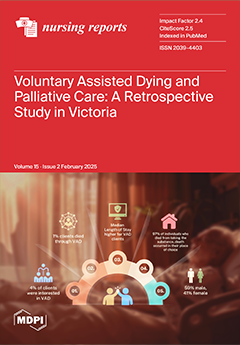Trillium Health Partners (THP) is a hospital network that serves the Mississauga region of Ontario, Canada, and sees nearly 1.7 million patient visits each year. THP is also a provider of highly specialized services to the region and a fully-fledged academic teaching center, with embedded research and innovation.
Background/Objectives: Highly trained, skilled, and experienced nurses are foundational to THPs ability to meet the complex care needs of our patients across specialized programs. In 2024, 50% of the nursing workforce at THP was noted to have less than five years of experience. This generation of nurses are reporting high levels of burnout and are at greater risk of leaving the profession. The more experienced nurses are also facing burnout due to the continued pressures and demands in the workplace, having to manage an increasingly complex patient assignment, while providing mentorship to more novice nurses. Based on the existing literature and our collective experience at THP, we have developed the Transition to Independent Practice Support (TIPS) program, a multi-pronged approach to bolster support for our nursing workforce. The TIPS program at THP is designed to address knowledge gaps and enhance clinical competence among new and aspiring nurses. The primary aim of this study is to evaluate the efficacy of the TIPS program in facilitating the transition of novice nurses to independent and competent practitioners, utilizing the Kirkpatrick Model of Evaluation The specific objectives include (a) assessing participants’ reactions to the TIPS program; (b) measuring the increase in nurses’ knowledge and confidence following program participation; (c) evaluating changes in nurses’ behavior and practice post-program; and (d) determining the program’s impact on nurse retention and quality of patient care.
Methods: Grounded in Meleis’s Transition Theory, the program combines webinars, simulations, clinical rounding, and mentorship to build resilience, decision-making, and confidence. Evaluative measures, based on the Kirkpatrick Model, assessed participant satisfaction, learning outcomes, behavior changes, and retention. Results: From September 2023 to March 2024, 388 interdisciplinary participants attended the program, including nursing students (56%), registered nurses (24%), registered practical nurses (14%), and aspiring nurses in other interprofessional roles (6%). Participants expressed high satisfaction with the program, achieving a mean reaction score of 4.80 (SD = 0.2921). Ninety-five percent found the sessions relevant, and 98% rated the facilitators as knowledgeable. Self-reported confidence significantly increased across all topics, with overall mean confidence scores rising from 2.94 to 4.52 (
p < 0.0001, Cohen’s d = 3.01), demonstrating a strong impact on skill acquisition and application. Behavioral evaluations through simulations, competency checklists, and follow-up touchpoints confirmed improved clinical performance, with participants achieving 100% compliance to nursing skills during simulations and sustained confidence at three-month follow-ups. Since the program’s implementation, nursing turnover rates decreased from 9.52% to 7.7% by March 2024, with 100% of RNs, RPNs and IENs of TIPS participants retained within six months.
Conclusions: This paper outlines the TIPS program and the diverse teaching and learning methodologies used in the design and program implementation to ultimately support the transition experience of the new gradate nurse into acute care. Preliminary outcomes are discussed including nursing retention rates, nurses’ knowledge, confidence, and skill levels.
Full article






